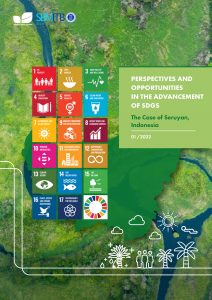Moving Towards Green Economy in the Advancement of SDGs
ollowing the awareness in multiple aspects to support the future of development, new concepts have been established. The Rio+20, which was held in 2012 by the United Nations and attended by global leaderships, have birthed the sustainable development concept, recognizing the issues within the environment and the development in the last few decades that go hand in hand, and therefore can no longer be viewed separately (Lavrinenko et al., 2019)1 . With preserving finance, social responsibility, and environment in mind, the sustainable development concept focuses on “people, prosperity, peace, partnership, and planet”. In 2015, the United Nations classified the concept into seventeen “Sustainable Development Goals” blueprint, grouping the global goals for each specified area.
In the context of economy to support sustainable development, the United Nations Environment Programme (UNEP) led the implementation of “green economy” which focuses on economic growth stemming from investments into activities that allow carbon emission and pollution reduction, social inclusivity, prevention of ecological losses, as well as efficiency of energy and resources. Other than environmental and energy improvement, the green economy also focuses on improving well-being and eradicating poverty. A country’s transition to a green economy could very well be complicated in practice due to the complexity of the existing “traditional” economy which has provided livelihoods to its population—however, looking at the number of environmental and social issues as the implication of the economy, the move forward is now more urgent than ever.
